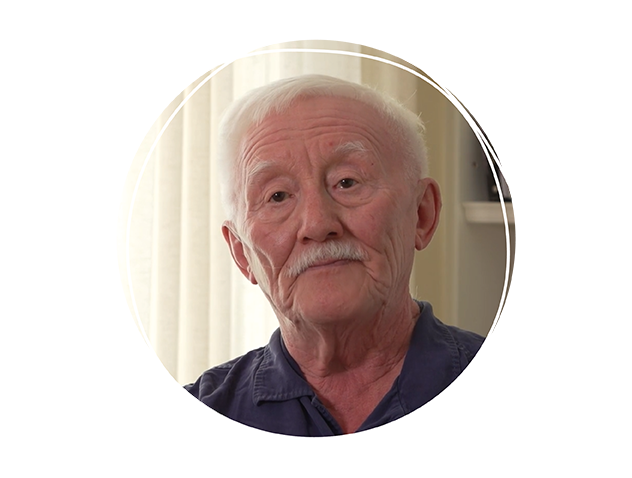
Faces of dementia: Piita's story
Piita, an Inuk and a residential school survivor, describes how he helped bring Inuit culture and food to a southern facility caring for Inuit Elders with dementia.
"In my particular period of time, we never had dementia among Inuit. We never had people with Alzheimer’s. Basically, this was because we died too young, and we had different diet of country food.
Today we have people, particularly in the last 10 years or so, who have dementia — Inuit from the Arctic and Inuit from Nunavut. Because these people cannot be looked after in their own communities — and because we have no facilities in our own communities — they often have to come here, to West Embassy in Ottawa. West Embassy is a place where they look after people with Alzheimer’s and dementia.
A lot of the people who are at West Embassy are Elders. Some are older than I am. Some are in their 80s and they don’t speak a word of English.
So a few years ago, a colleague and I decided that we would like to help the organization make some changes and provide more Inuit cultural awareness.
It was hard in the beginning to make this change, because it’s a Southern organization without much knowledge about Inuit, Inuit history and Inuit culture. This organization didn’t know about things like Inuit country food, or how to create culturally appropriate Inuit rooms, or why Inuit smile a lot. They didn’t necessarily understand why Inuit are very friendly people, and why Inuit may have different attitudes about life.
So a colleague and I talked to the management, and they accepted all of our recommendations. Our recommendations included a translator for Inuit Elders; bringing in country food like caribou meat, Arctic char, seal meat from Nunavut; and establishing a better relationship with the Government of Nunavut.
We also recommended and got visitations, which hadn’t been possible before — now Inuit can visit their relatives. We also got a good-sized room where we can gather and talk in Inuktitut with Inuit Elders. The staff tend to call them “patients” or “Inuit residents,” but we prefer to call them Inuit Elders because that’s what they are.
"This organization didn’t know about things like Inuit country food, or how to create culturally appropriate Inuit rooms... Our recommendations included a translator for Inuit elders, bringing in country food... [and] Inuit art."
When you eat your country food, it’s very sustaining. I knew an Inuk would need that food, and that’s what I really fought for them to have.
For the culturally appropriate room, a manager and I went to an Inuit art shop in Ottawa on Sparks Street and we bought Inuit drums so that Elders could hear Inuit drum dancing. We bought Inuit dolls so they could see their own artwork. We bought some carvings so they could see their own Inuit carvings from home. We bought some Inuit prints from Cape Dorset so they could heal more being in that place.
We also bought some pictures with walruses, polar bears, seals, belugas and muskox, as well as pictures of an igloo and a tent. We want to make the Inuit Elders feel more at home as much as possible.
It took about two and a half years of working together to get these things that we pushed for. Now, I believe that those things help a lot."
Adapted from a video at Livingmyculture.ca with the permission of Canadian Virtual Hospice and Piita Irniq.
Photos: Courtesy of Piita Irniq and Livingmyculture.ca/ Canadian Virtual Hospice
